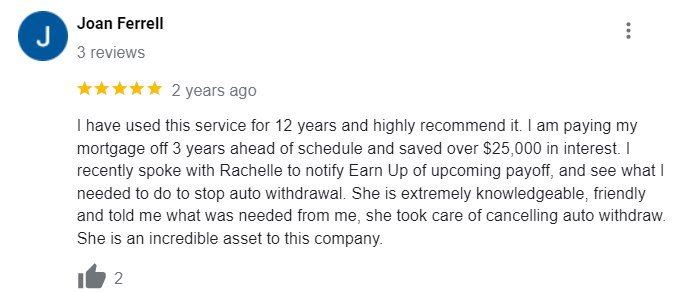Have you ever found yourself dreaming about buying your own home, but then reality checks in reminding you of the mountainous down payment? Save a Down Payment While Renting, they say. Easier said than done, right?
But imagine this – What if there were strategies that could transform that seemingly impossible dream into an achievable goal? Techniques to shave off unnecessary expenses and tactics to increase your income on the side.
The idea may feel like trying to squeeze water from a stone. But hold tight because we’re diving headfirst into proven methods for making it happen!
No spoilers yet! Just know that by sticking around, not only will you discover ways to maximize your savings potential but also learn how optimizing financial choices can lead you straight towards homeownership. So let’s buckle up for this exciting journey ahead!
Understanding the Importance of Saving for a Down Payment
Picture this: you’ve found your dream house. It’s got everything – a great location, just enough rooms, and that kitchen you always wanted. But there’s one thing standing between you and your new home – the down payment.
Saving for a down payment while renting can seem like trying to scale Mount Everest in flip-flops. Let me tell you from my own experience; it’s not as hard as it seems. The key is understanding where every dollar goes so we can start saving more effectively.
The reality? Most Americans are spending around 10% of their monthly income paying off debt according to Federal Reserve Economic Data. This makes scraping together money save towards big financial goals feel impossible at times.
But why exactly should we make sacrifices now to put away cash for later?
Your Financial Situation Dictates Your Future Housing Costs
Making consistent savings account contributions increases disposable income over time by minimizing interest fees on loans and credit cards. Not only does having less debt improve our financial situation but also gives us leverage when negotiating housing costs with lenders or landlords.
Avoiding Mortgage Insurance Premiums (MIP)
If you’re able to save up at least 20% of your future home’s cost, lenders won’t require mortgage insurance premiums (MIP). MIP adds an extra layer onto your regular mortgage payments if they perceive higher risk due to lower down payments – think about how wearing double socks feels unnecessary during summer.
Bigger Savings Goal Equals Lower Monthly Expenses
- A larger down payment decreases overall loan amount resulting in lower monthly payments.
- Having a larger down payment can provide you with additional financial freedom, allowing you to devote less of your income towards housing costs and more on everyday expenditures such as groceries or that long-awaited getaway.
Per Apartment List, the nationwide median rent for a two-bedroom apartment was $1,000.
Imagine owning your dream home. It might seem tough saving for a down payment while renting, but with smart money management, it’s achievable. Track every dollar and reduce debt to save more effectively. A larger down payment means lower monthly payments and fewer additional costs like Mortgage Insurance Premiums (MIP). So start saving today – your future self will thank you.
Strategies for Saving Money While Renting
Saving money while renting might feel impossible, but it’s easier than you think. With some smart moves and a bit of discipline, you can trim your expenses and put aside extra cash each month.
Cut Unnecessary Expenses
The first step is to cut unnecessary spending. Review your monthly bills – are there services or subscriptions that you rarely use? Eliminating these could result in significant savings over time.
You’d be surprised at how much lowering utility costs can help, too. Being mindful about turning off lights when leaving the room or unplugging devices not in use goes a long way towards shrinking those energy bills.
Moving to Cheaper Rent Options
Next, consider if cheaper rent options are feasible for you. A smaller place, like a one-bedroom apartment instead of two bedrooms, can significantly reduce rental costs.
According to Apartment List’s estimates, moving to a cheaper apartment could potentially save around $900 per month – nearly $11,000 annually. That’s big financial progress towards your payment savings goal.
Earning Extra Cash by Selling Unwanted Items
Another strategy involves decluttering your space and making money from it simultaneously. Sell unwanted items through social media marketplaces or host garage sales.
This approach has dual benefits: freeing up living space and adding more funds into your pocket—win-win.
Finding Roommates as an Option
If downsizing isn’t practical due to family size or other factors, why not bring someone else on board? Getting a roommate may seem daunting, but it’s an excellent option for cost-sharing.
Per the Census Bureau data, having a roommate could save you about $525 per month. That’s over $6k saved annually. It may not be everyone’s cup of tea, but it’s certainly worth considering if your living situation allows.
Making Smarter Choices
Conversely, daily tasks should not be overlooked. They’re essential too.
Save while Renting: Trim expenses by cutting unnecessary spending and lowering utility costs. Consider cheaper rent options, sell unwanted items for extra cash, or even find a roommate to share costs. Remember, every little bit helps when saving up.
Maximizing Your Savings Potential
The road to financial wellness begins with taking control of your finances. This means setting money aside for the future and managing high-interest debt like student loans, car loans, and credit cards. But how do you start?
A good first step is automating your savings through an automatic transfer into a separate savings account. You can even use online tools that let you set up automatic transfers timed right after payday – out of sight, out of mind.
Financial Peace University (FPU), for instance, offers a comprehensive course that teaches strategies on becoming debt-free in two years or less on average.
Managing High-Interest Debt
Paying off high-interest debts quickly reduces your overall interest payments. Start by focusing on one loan at a time while making minimum payments on others.
If it’s hard keeping track of multiple debts from different lenders, consider consolidating them into one monthly payment with lower interest rates using a low-rate personal loan or balance transfer credit card.
Saving Smarter: The Power of Emergency Funds
An emergency fund serves as insurance against unexpected expenses or income loss. Aim to save enough to cover three to six months’ worth of living expenses initially then gradually build it over time as circumstances change.
Your Credit Score Matters
Maintaining a good credit score helps when applying for mortgage loans since lenders look favorably upon borrowers who have shown they manage their money responsibly over time.
Finding the Balance: Debt-to-Income Ratio
The key here is striking a balance between paying down existing debts while saving for the future. Lenders assess debt-to-income ratio to determine loan eligibility, so it is important to maintain a balance between paying off existing debts and saving for the future.
Don’t forget, managing money effectively requires constant effort and vigilance. But with patience, persistence, and smart financial decisions like these – you’ll be on the road to financial wellness in no time.
Starting on the path to financial wellness means taking control of your finances – from automating savings, tackling high-interest debts, to building an emergency fund. It’s all about balance and smart decisions. Remember, maintaining a good credit score and keeping a healthy debt-to-income ratio are crucial for future loan approvals.
Increasing Your Income to Save Faster
Saving for a down payment while renting can feel like an uphill battle. But don’t lose hope just yet. One effective strategy is to increase your income through gig economy jobs and side hustles.
Finding Side Hustles that Pay Well
Exploring alternative methods of making money without leaving your primary job can be a great way to supplement income. Making the most of your spare time is essential for securing a good side hustle. For example, becoming a part-time dog walker or offering freelance graphic design services on social media platforms can help bring in some much-needed additional income.
You could also consider selling handmade crafts online or tutoring students after work hours. The key here is finding something you enjoy doing and monetizing it.
Leveraging the Gig Economy
The gig economy offers numerous opportunities to make extra money as well. Apps like Uber, TaskRabbit, or DoorDash let people turn their car into a taxi service, become a handyman-on-demand, or deliver food, respectively – earning them more dough on the side.
This flexibility of choosing when and where you want to work makes these gigs attractive options, especially for those who already have full-time employment but still need that future mortgage down payment boost.
Making Use of Online Banking Tools
Online banking tools, particularly automatic transfers from checking accounts into savings accounts right after payday hit—these aren’t just convenient; they’re saving thousands by ensuring no cent goes wasted before making its way to your savings.
Direct deposit from side hustles into a separate account also makes saving easier. It’s like setting up an invisible fence around your down payment fund, protecting it from being used for other expenses.
Taking Advantage of Technology
In today’s digital age, there are plenty of easy ways to earn money online that weren’t available just a few years ago. Websites like Etsy or eBay offer platforms where you can sell unwanted items cluttering your space – making decluttering profitable.
you some extra cash, but it also puts your space to good use when you’re not there. Just make sure your lease agreement allows for this before starting.
Remember, the secret is in discovering what you truly love to do. From gig jobs and side hustles to selling stuff online, there’s a wealth of ways to boost your income. Home-sharing can also bring in some extra cash. Utilize digital banking tools that automatically set aside money from each paycheck into separate savings accounts for your down payment. The goal might seem tough while renting, but with determination and smart strategies, it’s entirely within reach.
Optimizing Your Financial Situation
To achieve your goal of buying a house while renting, you must take steps to maximize your financial position. The good news? It’s possible, even if it might seem challenging at first.
You may ask yourself how can I possibly save for a down payment while dealing with rent and other expenses? A great starting point is choosing cheaper rent options. But that doesn’t mean moving into the cheapest place you find on Craigslist. Instead, think strategically about paying less in areas like housing costs. Consider relocating to a smaller apartment or getting roommates; these steps could make all the difference between just scraping by and actually saving money.
The idea of living debt-free isn’t only appealing—it’s also smart planning when trying to save up for a home purchase. By taking control of credit cards usage and chipping away at outstanding debts, more funds become available each month for your savings goal. This way you not only pay less interest over time but get closer every day towards being free from monthly payments that don’t contribute towards homeownership.
But let’s take this further – imagine no longer having mortgage insurance fees deducted from your paycheck because now they’re covered by private mortgage insurance (PMI). Sounds fantastic right? That’s where federal housing administration loans come in handy especially for first-time homebuyers as they offer lower closing costs along with PMI coverage.
Paying Cheaper Rent While Saving Up
Choosing an affordable rental property helps keep more money in your pocket—money that goes straight into retirement savings instead of being spent on costly rents or mortgages.
This move can free up substantial amounts of cash. Search for a single-bedroom dwelling rather than double, or even think about cohabitating to divide the cost.
Living Debt-Free
A debt-free way of life may appear to be an inconceivable fantasy, however it’s more attainable than you might suspect. The key is in setting clear financial goals and making smart choices.
consider consolidating your debt. Combining multiple debts into one payment can help decrease the amount of interest you pay each month, but be sure to stay on top of the payments. Just make sure to keep up with the consolidated payment plan.
If you’re renting but also want to buy a house, be strategic about lowering your housing expenses. Consider downsizing or getting roommates – don’t just settle for the cheapest rent available. It’s crucial to live debt-free: use credit cards wisely and gradually pay off debts. This way, you’ll have more money each month for savings. For first-time buyers, federal housing administration loans might be worth looking into.
Tips for Reaching Your Savings Goals
To achieve your savings goals, having a sound strategy is essential. It’s not just about setting aside money; it’s also about knowing how and where to allocate those funds.
Creating an Effective Budget
To start with, creating a budget is essential in managing your finances effectively. The 50/30/20 rule suggests allocating 20% of your paycheck towards financial priorities such as savings. This method allows you to handle monthly payments efficiently while keeping sight of the bigger picture – achieving your payment savings goal.
A good idea would be using a mortgage calculator that can help you gauge the impact on future payments and what kind of sacrifices might be worth making now. This step ensures you have enough money left each month after meeting all necessary expenses.
Importance of Saving Tax Refunds
Saving tax refunds offers another great option when striving toward big financial goals like saving for a down payment on property or becoming debt free. Consider utilizing that extra money from the federal government and depositing it directly into your bank account instead of spending it?
The beauty here lies in allowing these unexpected inflows to give momentum to our cause without impacting our day-to-day living costs or disposable income levels.
Focusing on reducing high-interest debts such as credit cards could save thousands over time too. Also remember – lenders require evidence that potential borrowers can manage their debts responsibly before granting substantial loans like mortgages.
Making Sacrifices Worthy
Your dreams are closer than they appear. Sometimes, a small sacrifice now can result in significant savings later on. Consider cutting back on non-essential spending or even moving into a smaller apartment.
Remember that these sacrifices are temporary and geared towards achieving your ultimate goal of homeownership.
Making Use of Technology
manage our money. From budgeting to investing, these digital tools can provide a wealth of information and assistance. Finding the right digital tool to meet your requirements and lifestyle is key.
Plan your savings journey with a clear budget, like the 50/30/20 rule. Leverage tools such as mortgage calculators to understand potential sacrifices. Consider saving tax refunds and reducing high-interest debts for significant boosts. Small lifestyle changes can bring big rewards in achieving homeownership dreams. Embrace technology that fits your needs to better manage finances.
Conclusion
Cracking the code to save a down payment while renting might seem like a tall order. But it can be accomplished.
Cut unnecessary expenses, remember? Trim the fat off your monthly outgoings and redirect that money towards your savings goals.
Sell unwanted items too! One person’s trash is another’s treasure after all. That extra cash can boost your down payment fund considerably.
And let’s not forget maximizing saving potential through debt management and credit score maintenance. You learned how critical these are in preparing for homeownership.
Besides, you discovered ways to increase income via side hustles or gig economy jobs – Remember those?
The journey doesn’t end here, though. Take these strategies forward as you navigate towards financial independence and ultimately, owning your dream home!
FAQs in Relation to Save a Down Payment While Renting
Is it possible to save money while renting an apartment?
Absolutely; with a solid budget and disciplined spending habits, you can start saving for your down payment even while renting.
Where can I save money for a down payment?
You should stash your savings in a high-yield savings account or other low-risk investment accounts that are easily accessible when needed.
How much of a down payment do you need for a $200,000 house?
If we go by the typical 20% rule, then around $40k, but some lenders accept less depending on various factors. But remember, you can get home for as little as 3-5% down.
Can you save for a down payment?
Certainly. With proper planning and discipline, anyone can accumulate enough funds over time to make their dream home purchase achievable.










